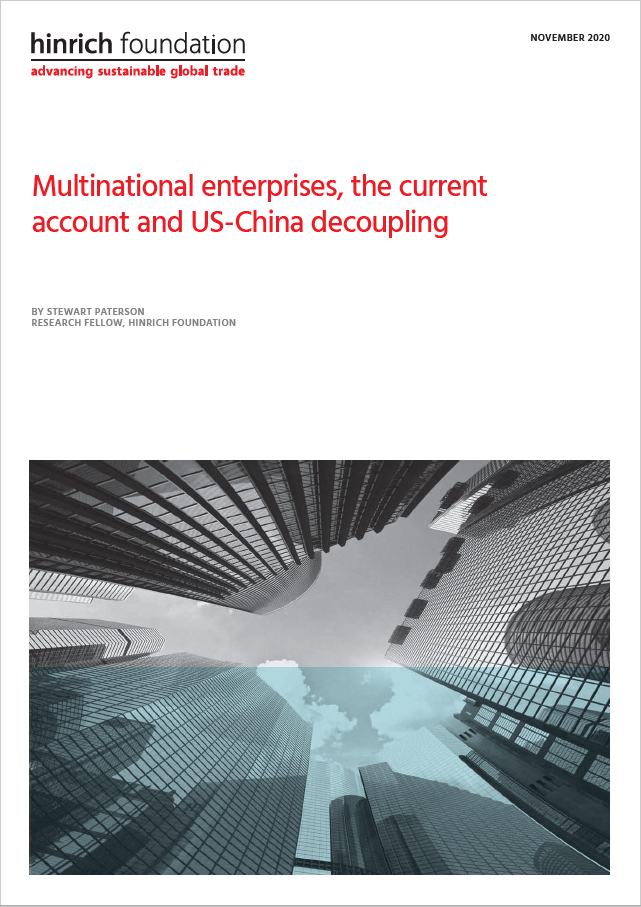US-China trade
MNEs, the current account and US-China decoupling

Published 25 November 2020
This paper utilizes data on US MNE activity (including foreign direct investment) and balance of payments data to present a more granular understanding of the US-China relationship than captured by bilateral trade data. It offers analysis of the changing nature of China’s economic structure and capabilities, and the evolving relationship with the US at a time of continuing tension.
Traditional measures of international trade increasingly fail to capture the reality of economic interconnectedness between nations. The emergence of global value chains (GVCs) – mainly established during the rapid growth of foreign direct investment (FDI) throughout the 1990s and early 2000s - necessitate a closer look at where value is added and captured than possible in simple cross-border trade data.
This issue is particularly pertinent to the US-China relationship. While China used to capture little of the value-added when manufacturing Apple’s iPhones (largely due to imported components) this has changed significantly in China’s favor in more recent years, for example. This reflects the success of China’s industrial policy but also offers further positive economic and geo-economic spillover effects.
In Multinational enterprises, the current account and US-China decoupling Hinrich Foundation Research Fellow, Stewart Paterson, utilizes data on US MNE activity and balance of payments data to present a more granular understanding of the US-China relationship than captured by bilateral trade data. It offers valuable analysis of the changing nature of China’s economic structure and capabilities as well meaningful comment on the evolving relationship with the US at a time of continuing tension.
Download Multinational enterprises, the current account and US-China decoupling by Stewart Paterson:

© The Hinrich Foundation. See our website Terms and conditions for our copyright and reprint policy. All statements of fact and the views, conclusions and recommendations expressed in this publication are the sole responsibility of the author(s).
Stewart Paterson is a Senior Research Fellow at the Hinrich Foundation who spent 25 years in capital markets as an equity researcher, strategist and fund manager, working for Credit Suisse, CLSA and most recently, as a Partner and Portfolio Manager of Tiburon Partners LLP.
Have any feedback on this article?






